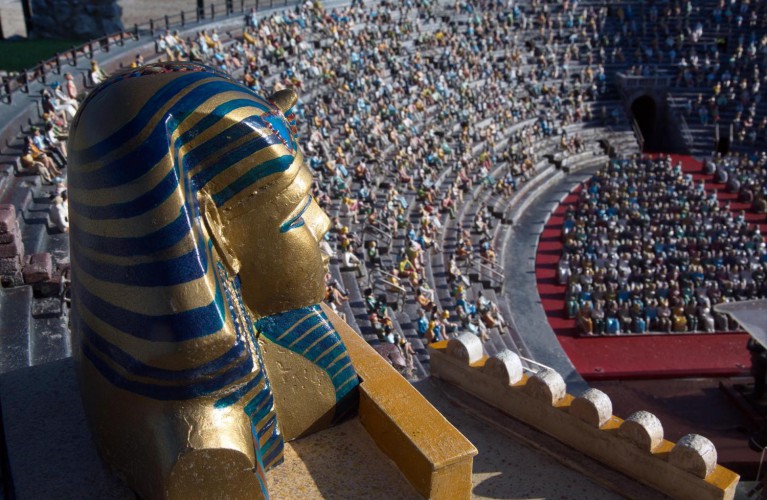
The Arena at Verona is one of the greatest of Roman monuments, not just in terms of its artistic value but also for it
The Arena at Verona is one of the greatest of Roman monuments, not just in terms of its artistic value but also for its huge size: it has axes of 152 metres and 123 metres and reaches a height of 30 metres. The Arena was built towards the end of the first century AD. It is sectioned into four areas divided by three barrel vaulted corridors, the flights of steps have a high base and are held up by a radial structure in seventy-three sections which rise up diagonally.
Every year, in the months of July and August, wonderful operas are performed in the Arena of Verona. Piazza Bra has been described as one of the most beautiful, spectacular and liveliest squares in Europe. It is immense, verdant and full of hustle and bustle. Three sides of the square are filled by the seventeenth century Palazzo della Gran Guardia, the neo-classical Palazzo Barbieri, seat of the Verona town council, and the Arena.
The Palladian Basilica, in addition to being the most important historic building in the city, is also one of the most representative examples of the Venetian Renaissance. Together with the motif of the Palladian Loggias, the Basilica creates a wonderful cornice which dominates the southern end of the Piazza dei Signori.
The inner sections of the Basilica date back to the first half of the fifteenth century, whilst the two rows of outside loggia were built following the designs of Palladio between 1549 and 1614. On the upper floor one finds a magnificent Gothic hall, the high ceiling of which takes up the whole upper part of the building.
The side of the square opposite the Basilica is occupied by the Bernada, or Captain’s Loggia, certainly attributable to Palladio and the façade of the Monte di Pietà in the middle of which is the little church of San Vincenzo, built between 1604 and 1617 by the architect Bonin. On the short side of the square stand two columns, one bearing the emblem of St. Mark and the other a statue of the Redeemer.
The plans for this ingenious creation by Palladio date back to 1550 but it was only completed in 1606 by Scamozzi. The main body of this square building is Ionic, fronted with a great flight of steps and topped with statues on all four sides. In the middle is a spiral staircase, topped with a cupola in concentric rings.
The Paduans refer to the basilica as “il Santo” (the Saint). Construction got underway in 1232, straight after the death of Saint Anthony, and was finished in the fourteenth century. The plan of the basilica is in Romanesque style with a few Gothic features, whilst the six hemispherical domes and the central one, a truncated cone, are Byzantine. The embattled towers and two octagonal bell towers have an Arab look and overall the basilica has the appearance of an oriental temple.
The lower section of the façade has four impressive Gothic arches above which sits an arcade with arches and a double balustrade.
Above the gable are pilasters and below it are hanging arches. Alongside the central rosette are two mullioned windows. Saints Anthony and Bernardino are depicted in the lunette of the south door. A statue of Saint Anthony by Augusto Felici stands in a wall niche. The three bronze doors, designed by Camillo Boito, were cast in 1895.